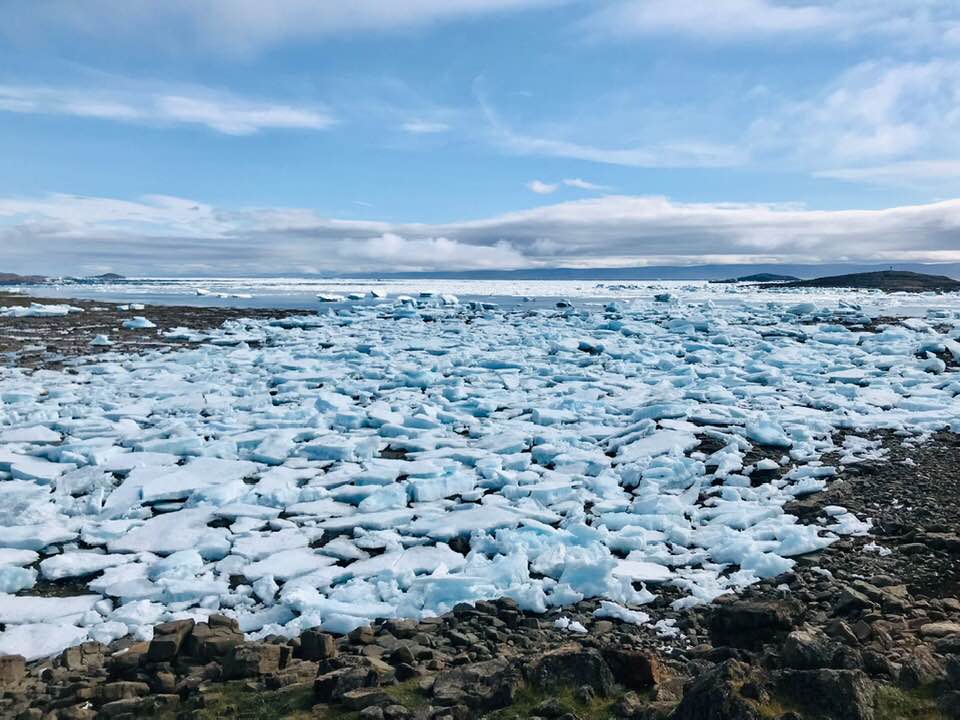Sea ice delays unloading of sealift to Iqaluit, officials say
“It’s a waiting game.”

Sea ice in Iqaluit has delayed the unloading of sealift supplies, officials say.
Jimmy Akavak, marketing director at Nunavut Eastern Arctic Shipping Inc., said they were able to get a few sea cans off the first sealift that arrived on Friday, July 19, before the ice made it impossible to continue.
“It’s a waiting game,” he said.
Looking out on the bay in Iqaluit, huge chunks of ice cover the water with barely any space in between.
Continuous strong south winds have pushed the ice pieces into Frobisher Bay, Akavak said.
“We’ve had south winds since April. Slowly that ice kind of hovered around the bay and eventually it moved in,” he said.
Although a bit of ice is usually not a problem for the barges, the flat-bottomed boats used for carrying things off and onto the sealift, there is no space for them to sail through right now.
“When it’s packed like this it’s very hard to move a big square barge around. It’s heavy, heavy ice too,” he said.
Along with construction materials, including materials for Iqaluit’s new hotel, supplies for Northmart are also stuck on the sealift. These supplies mostly consist of dry and canned goods, Akavak said.
The Happy Dragon, the ship carrying the hotel’s pre-assembled rooms, is scheduled to arrive on July 24 or 25. If the ice conditions continue, they likely will not be able to get anything off that ship either, Akavak said.
Akavak said they still continue to attempt to maneuver the barges through the ice.
“Until we do get good weather, it will remain the same. Hopefully by the weekend,” he said.
Akavak also hopes for big tides to carry some of the ice away.
“Hopefully when the tide comes, smaller pieces will float away. We don’t get big tides until the first week of August usually.”
Stacy Dufour, superintendent of icebreaking, escort and flood control service for the central and Arctic region of the Canadian Coast Guard, said his office deployed an icebreaker to escort ships into Iqaluit about a month ago.
“It is typical of the beginning of the Arctic season. That ice is drifting down from the High Arctic to Baffin Bay and Davis Strait. What we’re seeing for the past month is sustained south winds from the southeast that is pushing the ice into Frobisher Bay up to the narrows,” he said.
The ice conditions have not delayed the arrival of sealifts or tankers that arrived earlier in the season, Dufour said.
“For us, it’s business as usual. Every season is different. It is very manageable and we have our ships in the area to assist if needed,” he said.